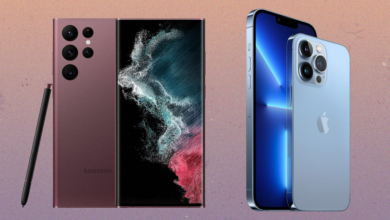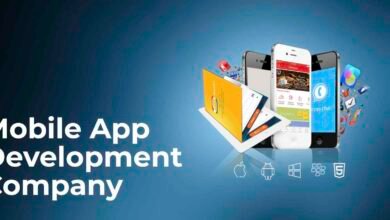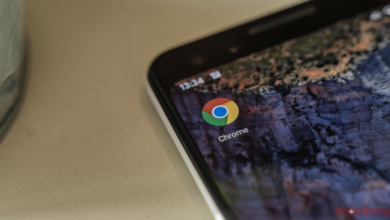Best Note-Taking Apps for American Students and Pros
Best note-taking apps for American students & professionals. Compare Evernote, OneNote, Notion & more for productivity, organization.

In the digital age, having the best note-taking apps is essential for staying organized, productive, and efficient whether you’re a student managing coursework or a professional handling meetings and projects. The right app can transform how you capture, store, and retrieve information, ensuring you never miss critical details. This in-depth guide explores the top note-taking applications tailored for American students and professionals, evaluating their features, usability, and unique advantages to help you make an informed choice.
For students and professionals alike, effective note-taking is a fundamental skill that enhances learning, retention, and productivity. The best note-taking apps have evolved beyond simple text editors, now offering cloud synchronization, multimedia integration, AI-powered organization, and seamless collaboration. American users, in particular, need apps that cater to diverse needs whether it’s recording lectures, annotating research papers, or managing business workflows. This article examines the leading note-taking solutions, comparing their strengths to help you find the perfect fit for your academic or professional demands.
Best Note-Taking Apps for American Students and Pros
Evernote The All-in-One Powerhouse
Evernote remains one of the most versatile note-taking apps, trusted by millions for its robust features. It supports text notes, checklists, audio recordings, and even document scanning, making it ideal for students compiling research or professionals organizing meeting minutes. One standout feature is its optical character recognition (OCR), which allows users to search for text within images a game-changer for digitizing handwritten notes or business cards.
Microsoft OneNote The Ultimate Free-Form Notebook
Microsoft OneNote stands out for its flexible, canvas-style interface, mimicking the feel of a physical notebook. It allows users to type, handwrite, draw, and embed files anywhere on the page. This makes it perfect for students who prefer sketching diagrams alongside lecture notes or professionals brainstorming project ideas. Since OneNote is part of the Microsoft 365 ecosystem, it integrates seamlessly with Teams, Outlook, and Word.
Notion The All-in-One Workspace
Notion is more than a note-taking app it’s a complete productivity platform combining notes, databases, task management, and wikis. Its modular design lets users create custom dashboards, making it ideal for students organizing study schedules or professionals managing complex workflows. What sets Notion apart is its ability to interlink pages and databases, creating a dynamic knowledge base. Students can track assignments, research papers, and class schedules in one place.
Apple Notes The Simplest Choice for Apple Users
For those deeply embedded in the Apple ecosystem, Apple Notes offers a clean, intuitive note-taking experience. It syncs effortlessly across iPhones, iPads, and Macs via iCloud, ensuring notes are always accessible. Features like password-protected notes, document scanning, and rich text formatting enhance its utility. While it lacks advanced collaboration tools, its simplicity and seamless integration with other Apple apps make it a reliable choice for quick notes and personal organization.
Obsidian The Ultimate Knowledge Management Tool
Obsidian appeals to users who prefer a markdown-based, offline-first approach to note-taking. Its standout feature is bidirectional linking, which helps create a web of interconnected ideas ideal for researchers, writers, and students building a personal knowledge base. Unlike cloud-dependent apps, Obsidian stores notes locally, giving users full control over their data. Its web clipper extension is particularly useful for saving articles, PDFs, and web pages directly into notebooks.
Google Keep Lightweight and Cloud-Friendly
Google Keep is a minimalist yet effective app for quick notes, reminders, and lists. Its color-coded cards and label system help with organization, while voice notes and image attachments add versatility. Since it’s part of Google Workspace, it integrates smoothly with Google Docs, Calendar, and Drive. However, Keep’s simplicity means it’s not suited for long-form notes or complex projects. It’s best for short-term reminders, shopping lists, or brainstorming ideas.
GoodNotes Best for Handwritten Notes
GoodNotes is a top choice for iPad users who prefer handwriting their notes. With Apple Pencil support, it delivers a paper-like writing experience, complete with customizable paper templates and smooth ink rendering. Students love its PDF annotation features, allowing them to mark up textbooks and lecture slides. Professionals use it for sketching ideas, signing documents, or journaling. Its OCR search makes handwritten notes searchable, though it’s limited to Apple devices.
Bear A Minimalist Writer’s Dream
Bear is a beautifully designed, distraction-free app for writers and creatives. Its focus mode, markdown support, and hashtag organization make it perfect for drafting essays, blog posts, or journal entries. Available exclusively on Apple devices, Bear prioritizes aesthetics and simplicity over complex features. While it lacks collaboration tools, its export options (PDF, HTML, DOCX) ensure compatibility with other platforms.
Zoho Notebook Visually Appealing and Functional
Zoho Notebook offers a sleek, card-based interface with multimedia note support. Each note can include text, images, audio, and checklists, organized into customizable notebooks with unique cover designs. While its free version is generous, its collaboration features are less advanced than Evernote or Notion. Still, its intuitive design makes it a solid choice for personal use. With so many options available, selecting the right app depends on factors like ease of use, cross-platform compatibility, pricing, and advanced functionalities.
Roam Research For Networked Thought
Roam Research is a niche tool designed for non-linear, connected note-taking. Its “bi-directional linking” helps users explore relationships between ideas, making it popular among academics and researchers. However, its subscription model and steep learning curve may deter casual users. Those who invest time in mastering it, though, find it invaluable for deep thinking and knowledge synthesis. By understanding the unique benefits of each tool, you can optimize your note-taking process and boost efficiency.
Read More: How Blockchain Is Disrupting the Healthcare Industry
Conclusion
Selecting the best note-taking apps depends on your specific needs whether it’s simplicity, collaboration, handwriting support, or deep organization. Students may favor OneNote or Notion for structured learning, while professionals might prefer Evernote or Obsidian for versatility and knowledge management. The key is to choose a tool that aligns with your workflow and enhances productivity. Evernote’s free tier is functional, but premium plans unlock advanced tools like offline access, larger uploads, and collaboration features.
In an era of information overload, a reliable note-taking system is indispensable. The apps discussed here cater to different preferences, ensuring there’s an ideal solution for everyone. By leveraging these digital tools, American students and professionals can stay organized, efficient, and ahead in their academic and career pursuits. While some users find its interface slightly cluttered compared to newer apps, its reliability and extensive integrations Google Drive, Slack, Microsoft Teams make it a top choice for long-term note management.
FAQs
Which note-taking app is best for students?
Evernote and OneNote are excellent for students due to their organization features, multimedia support, and seamless syncing across devices.
Are there free note-taking apps available?
Yes, Google Keep, Apple Notes, and Microsoft OneNote offer robust free versions with essential features. Some apps excel in handwriting recognition, while others prioritize team collaboration.
What’s the best app for handwritten notes?
GoodNotes and Notability are top choices for iPad users who prefer a natural handwriting experience. Notion and Evernote provide strong collaboration tools for team projects.
Can I collaborate with others on notes?
Notion and Evernote provide strong collaboration tools, allowing real-time editing and shared workspaces.
Which app works best offline?
Obsidian and Evernote premium allow full offline access, making them ideal for users without constant internet connectivity










